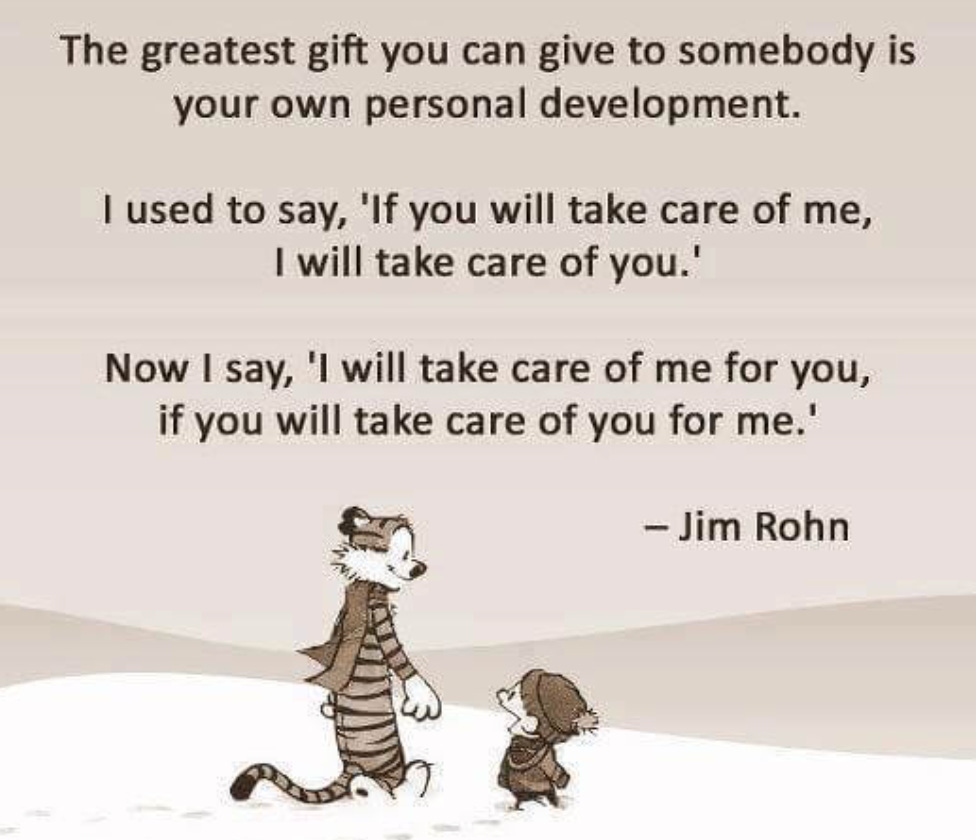Emotional Numbness and The Middle Way
“We cannot selectively numb emotions, when we numb the painful emotions, we also numb the positive emotions.”
—Brené Brown, The Gifts of Imperfection
I provided a quick description of my “emotional numbness” as the fifth item of a “top 5” in a previous post about difficulties I’m having with my memory. In this post, I wanted to dive a bit deeper into a different facet of emotional numbness beyond its impact on memory.
What is the impact of emotional numbing on my relationships with others?
Is emotional numbing common?
First it’s important to recognize that numbing of emotions is pretty common. While emotional numbness is a form of dissociation, I’m not trying to diagnose myself with a dissociative disorder. We can all have dissociative behaviors from time-to-time. For example, it is common for many of us to become so absorbed in a book or film that we lose awareness of what's happening around us. I’ve personally experienced arriving back home after a stressful day at the office without the specific memory of exiting the freeway!
Dissociation can manifest in various forms, from mild detachment to more severe dissociative disorders. The American Psychological Association (APA) defines disassociation as “a defense mechanism in which conflicting impulses are kept apart or threatening ideas and feelings are separated from the rest of the psyche. See compartmentalization.” With this definition, there is a broad spectrum of dissociative experiences.
Can numbness be a positive?
Dissociation, or temporary numbing of our emotions, can help us manage through stressful situations. From an evolutionary perspective, disassociation likely enabled ancient humans to survive dangers, such as predator attacks. By detaching from any emotional and physical pain, they could focus on survival or escape. We might not face the same kinds of threats from the environment as our ancestors, but even we as modern humans still face life-and-death situations. For example, dissociation allows surgeons to remain focused in the operating room, setting aside for later any anxiety about the human lives on the line.
Beyond survival, numbing our emotions in the short-term can help us avoid painful feelings so that we can (hopefully) process them later. In healthy doses, disassociation can help us ensure that the right aspect of our personalities appear at the right time. For example, we wouldn’t want to feel self-doubt during a high-stakes presentation or feel deeply sad during a celebratory dinner. Not having the ability to dissociate at all could be crippling in modern life.
However, just like in Buddhism, there is a “middle way.” Some amount of dissociation is healthy. Too much dissociation creates issues.
Too much numbness?
Getting back to the Brené Brown quote above, numbing our emotions can be difficult to do selectively. While numbing emotions can be an effective way to function and move on with life in the short-term, it can have lasting consequences.
From my own perspective, I believe my own emotional numbing has impeded my ability to perceive the full range of human emotions. I have been working on trying to log and inventory my own range of emotions experienced in daily life using words on the Feelings Wheel. Deliberate practice has demonstrated to me that in day-to-day life, I feel a very limited range of emotions.
Source: psychologyinterns.org
So, what’s the problem here? So far, I’ve identified a few:
Challenges with self-empathy. As I’ve written before, I have been working on self-empathy to help manage feelings of guilt. My struggle has been with recognizing and accepting my own emotions, thus making it difficult to engage in self-empathy.
Impacts on empathy for others. I feel my own disconnection from my emotions has an impact on my ability to perceive and understand the emotions of others. I’ve written before about how the lasting impacts of most conflicts are not about the subject of the conflict itself but rather the feelings of everyone involved. I continue to face issues in perceiving and understanding these emotions in real-time. I am working on this, too!
Difficulty expressing feelings. I’ve also written before about non-violent communication (NVC), which involves expressing feelings and needs. Because I have difficulty identifying and articulating my feelings, I believe my communication is not as effective as it could be. Still, Marsha, and I are working to be very deliberate about changing our practice here through state-of-the-union (SOTU) meetings between ourselves and with our younger daughter to focus on improving this style of communication.
This is all a work in progress!
Resulting from childhood experiences?
"At the end of the day, the most overwhelming key to a child's success is the positive involvement of parents.”
— Jane D. Hull, American politician
"At the end of the day, the most overwhelming key to a therapist’s success is to blame everything on the parents.”
— Unknown
This discussion of the causes or predictors of dissociation requires a nuanced approach. It is common for therapists to point to childhood experiences as an underlying cause of our current behaviors, including dissociation. As both a child and a parent, I understand the complexity of this issue, as childhood experiences are shaped by a combination of factors at the individual, relationship, community, and societal levels. As such, I want to be careful not to blame my family life or parents for what’s happened to me personally.
At a broader level, it’s important to note that children don’t need to directly experience abuse to be affected by it. For example, simply witnessing domestic violence can cause ill effects on children.
Even subtle concepts like conditional love — where children feel their worth is tied to actions and achievements, rather than being inherent — can lead to a set of emotional and behavioral issues. Again, these feelings may not have entirely emanated from within the family but could have influences from the community and societal levels.
These and other more severe experiences, including violence, abuse, and neglect, are classified by the CDC as adverse childhood experiences (ACEs). According to the CDC, about 64% of adults in the United States reported they had experienced at least one type of ACE before age 18. The problem is growing, as today, three in four high school students reported experiencing one or more ACEs. Here's what is written in that CDC report.
“Preventing ACEs could potentially reduce many health conditions. Estimates show up to 1.9 million heart disease cases and 21 million depression cases potentially could have been avoided by preventing ACEs. Preventing ACEs could reduce suicide attempts among high school students by as much as 89%, prescription pain medication misuse by as much as 84%, and persistent feelings of sadness or hopelessness by as much as 66%.”
— CDC.gov
With ACEs experienced by the majority of the U.S. population, the impact is widespread but the media coverage, while growing, remains minimal. Without going into specifics, I think it’s fair to say if statistics hold up, the majority of people I know, including myself, my parents before me, and my adult children have likely been subject to what would be classified as adverse childhood experiences.
To defend these therapists who explore childhood experiences with their patients, there is a strong link between adverse childhood experiences and dissociation. For example, the American Psychological Association published a study showing that ACEs predict insecure attachment patterns in adult relationships through dissociation and difficulty regulating emotions.
The reason I bring up this background is that emotional numbness may be much more prevalent than we all think. While I have mentioned in the past that my kids think I have an undiagnosed case of autism spectrum disorder (ASD), there’s also a case to me made that perhaps I’m more neurotypical than my kids think and that I simply had a set of life experiences that precipitated a bit of emotional numbness. Perhaps this thought may spark some ideas in some of you, too.
What am I doing about this?
While reflecting on emotional numbness may seem like a “downer,” I am working on getting in better touch with my emotions to improve my own self-empathy, empathy for others, and communications. I am seeking my own “middle way.” Here are some of the steps.
Retirement. I mentioned in a previous post that a major retirement goal for me was to work on repairing some past damage to the “glass balls of life.” I want to use my retirement to work on myself to be there for others in my life! There’s also a big reduction in stress in my life to make room for this work!
Intentional communication. Marsha and our kids have been very supportive of the journey I am taking to get in better touch with my own emotions, and we are working on our relationships together. The SOTU meetings are just one example.
Self-care. With all the chronic disease, I’ve been working on mindfulness, exercise, diet, and healthy sleep. I believe this self-care helps to set a good foundation for self-empathy.
Professional help. I quoted Bill Gates in a previous post when he said “everyone needs a coach.” In this context, I have an individual therapist. Marsha and I see a couples therapist, too. Much of this therapy centers on pinpointing our feelings and needs.
Journaling. I’ve found that writing this personal journal is helping me to process all these emotions, as well as to hopefully put thoughts into words and then words into actions.
I am still on this journey. As I’ve stated before, a reason for my willingness to be so open is to share with others who may be going through similar experiences. Thank you again for joining me.
Source: markmanson.net





